- Overview
- Trip Outline
- Pricing
- Trip Includes
- Trip Excludes
- Gallery
- Reviews
- FAQ
Route:

Technical Characteristics:
Route Profile: Medium. You will be hiking on a trail with exposed sites that may be secured with ropes or chains, and you may need to use your hands for balance. The terrain is partially steep, fall hazard is possible. Some sure footedness and experience with hilly terrain would be of benefit.
Total Distance: 91.4 km
Travel Season: Any date on request from January 2 to December 31, 2023
The Lost City trek closes once a year for a period of a month, usually around the beginning of September. This is due to Indigenous religious ceremonies.
Tayrona National Park Closure: Due to new local indigenous communities’ regulations, the Tayrona National Park will close three times a year in the following periods: February 1 -15; June 1 - 15 and October 19 - November 2
*Group rates available for this tour. As this is a guided tour, the pricing improves with more people participating. Please ask us for details
Accommodation:
3* hotels, rustic lodges and tents
Colombia Off Road is one of the most complete active programs as it combines both, adventure and culture, while visiting place on and off the beaten track. This itinerary takes you through different ecosystems: from a trek in the Andean highlands at the foot of the snow-capped volcanoes, down to a 4-wheel drive over the dry deserts of the Guajira peninsula, to the humid jungles of the Lost City trek. Covering also the cultural icons like the coffee area, Caribbean beaches and ending at the historical city of Cartagena de Indias. The trip’s highlights include a four day trek in Los Nevados National Park in the central Andes range. In addition to the trek, the coffee culture enriches the experience and can be enjoyed in the town of Salento, right in the heart of Colombia’s traditional coffee area; a three day trip to the northernmost point in South America: Punta Gallinas located in the Guajira peninsula, where the amazing sand dune beaches meet the sea. As well you have the cultural experience to see the Wayuu indigenous group’s way of life; a four day trek to La Ciudad Perdida of the Tayronas, known as “The Lost City”, one of the best restored and preserved archeological sites in the country. It is located in the Buritaca Valley in the Sierra Nevada de Santa Marta, the highest costal range in the world; Tayrona National Park, a visit to the famous Tayrona Park with an easy gentle walk to enjoy some of Colombia’s best beaches in the country and lastly to Cartagena de Indias where you will enjoy a cultural visit to the historical fortified city.
Itineraries
Day 1
Arrival in Bogotá
Arrival at Bogotá Airport and private transport to your hotel.
Day 2
Bogotá City tour: Historical downtown, Gold Museum & Monserrate 6 – 7 hours
Full day private city tour to the historic part of Bogotá. After breakfast, enjoy the historic center of the city on foot. You are right in the middle of the charming colonial area known as La Candelaria, and you will visit the world famous gold museum, the Plaza Bolivar and go by cable car to the Monserrate Sanctuary, at an altitude of 3152 m, overlooking the city. A quick visit to the museum of the famous Colombian artist Botero is also an option.

Day 3
Salento – Pereira – Trek: “La Pastora” (2460 m) 5.9 km + 355 m
Pick-up at the hotel and transfer to the domestic terminal for a flight (one hour) to the city of Pereira, located at the heart of the coffee area. Upon arrival, there will be a transport ready to take the group to the beginning of the trail; before heading into the mountains, there will be a short stop in the city to buy some snacks and any last minute things anyone might need. Then the drive takes about two hours by the margins of the Otun River, passing the rural areas of “La Florida” and “La Suiza”, until the head of trail known as “El Cedral” (2105 m). From this point, the group will follow a very nice trail with a moderate ascent rate for two and a half to three hours to “La Pastora” refuge, located in the cloud rain forest, the place to spend the night.
Day 4
Trekking: “Berlin” Farm (3848 m) 10.9 km + 1388 m
Departure from “La Pastora”, taking the same trail as the day before, but by a steeper terrain. It will take about two and a half hours to reach a very well-known farm called “El Jordan”, located at an idyllic place between volcanic hills covered with dense vegetation and decorated with waterfalls of crystal clear water. From here, the vegetation starts to change into paramo and the forest starts to open up. The last section is quite steep, following a long traversing trail until the ridge of the El Agrado Valley, which will lead to the next farm “Berlin”. This is one of the most beautiful places in the park, in a seldom visited area.

Day 5
Trekking: “Primavera/La Playa” Farm (3769 m) 12 km To La Angustia: + 372 m To La Linea: + 215 m To Quindio River -416 m To La Primavera/La Playa - 250 m
Today’s hike begins ascending “El Agrado” River Valley up following an old trail which goes over “La Amargura” pass (4220 m), the border between the states of Risaralda and Quindío. For the high energy hikers, there is the option to do a longer hike, climbing up to Pico Chispas (4378 m) and then rejoin the trail. After the “La Amargura” we pass quite a steep descent that will lead down into the Quebrada Cardenas Valley, where the Quindio River flows towards the Cócora Valley. After the river crossing (3804 m), we follow a muddy trail up to the mountain pass known as “La Linea” (4019 m), which divides the states of Quindío and Tolima, and an excellent view point towards “Paramillo del Quindio” (4745 m), the highest summit of Quindío state, and the Nevado del Tolima in the neighboring valley. From the pass, there is an easy descent toward the “La Primavera/La Playa” farm, another humble place where we will be served the hot local drink “agua de panela” (hot drink with raw sugar) or coffee.
Day 6
Trekking: Salento (1919 m) by the Cardenas Valley 16.5 km + 250 m – 1594 m
The last day in the mountains! Leaving after breakfast we go back up to “La Linea” mountain pass (4019 m) and descend to the Quindio River (3804 m), after crossing a short ascent to the abandoned “Buenos Aires” farm. After about an hour, the “La Argentina” farm will come into view. Descent through beautiful landscapes and rainforest, making a semi-circular ascent ending the trail at the famous Cocora Valley, a spectacular valley located at 2425 meters and adorned with Colombia’s national tree: The Wax Palm. Once in the Cocora Valley, the group will be picked up and transferred to the lovely town of Salento, by the traditional Willies jeeps (25 minutes) that are a symbol of the coffee area´s coffee culture. Upon arrival in Salento, the group will be taken to a hotel located in the colonial part of the town. There will be good time to enjoy the town and drink some of Colombia’s best coffee!

Day 7
Salento (1919 m) – Coffee Tour
After a well-deserved rest and an easygoing morning, the group will have a coffee tour in one of the traditional coffee farms of the area. The coffee tour shows the entire coffee production from the seed to the final product. It also includes a very pedagogic coffee tasting to learn about the different types and qualities of the local coffee. Lunch will be at one of Salento’s typical restaurants and then there will be some free time to enjoy this lay back town and the wide offer of handicrafts and local products. For the active traveller, there are plenty of extra tours options like “La Kasa” botanical tour guided by experts in the fauna and flora, horseback riding itineraries, mountain biking routes, just to name a few.

Day 8
Flight: Armenia – Riohacha via Bogotá
After breakfast, pick-up and transfer (one hour) to Armenia’s airport. Domestic flight to Riohacha (three hours) via Bogota. Transfer to hotel in Riohacha and in the afternoon, a nice walk by the seaside promenade in Riohacha, where there will be plenty of Wayuu Indians working on their handcrafts while enjoying the sunset of the Caribbean.
Day 9
Punta Gallinas – The Northernmost Point of South America
With a name that does relate much to the place (Chicken Point), it is definitely one of the most unique spots in the country. Located in the upper most point of Colombia and the South American continent, Punta Gallinas offer some of the most amazing beaches to be found along the Caribbean coast. Punta Gallinas, originally a lighthouse, now in ruins, is three to four hour drive from Riohacha. To get there, first we take a good road “Cuatro Caminos”, a four way intersection in the middle of nowhere and then north by the main road, passing in the distance Uribia, the Wayuu capital and also named the Indigenous capital of Colombia. After about a one and a half hour drive, the tour goes into the Colombian “outback” driving over a desert where only 4 wheel drive tracks can be followed. The landscapes get wilder and the families living out there have a hard daily life. Over the next two days we will see the Bahia Ondita and Bahia Onda, with amazing landscapes, open skies and colorful sand beaches. After two hours of driving in this remote land, the sand dunes of Taroa will be reached. This is the highlight of this area, just like a place just out of a story… the yellow sands falling down the hill into the roaring sea. Sunset here is a must and an experience of a lifetime. Punta Gallinas, where the ruins are, has a nice beach with an incredible turquoise sea and the view into an endless ocean! By the way….you are not very likely to be surrounded by many people, if any at all! The night will be spend in a local home stay built and run by the local Wayuus, also part of the trip’s experience.

Day 10
Cabo la Vela
A morning visit to enjoy the beautiful beach of “Punta Aguja”, there is the optional boat ride to Hondita Bay to spot pink flamingos (this tour is not included, but can be ordered the night before). After lunch, departure from Punta Gallina crossing once again La Alta Guajira’s Desert, until the Cerrejon Railroad (Cerrejon is the biggest open sky coal mine in the country), from where the road to Cabo la Vela starts. The last section is more inhabited than the desert up north, and here lies one of the only windmill parks in the country. A two to three hour desert road trip from Punta Gallinas is what it takes to get down to El Cabo de la Vela, located on the western coast of the Guajira peninsula, south from Punta Gallinas. It has some of the best beaches, hardly visited, only crowded during the Colombian holidays. Otherwise, an idyllic spot to relax and enjoy the nature. The place is great to get lost in the many bays, desert trails and also exploring the local cuisine and traditions. The place is inhabited by the Wayuu indigenous group and it is possible to see the traditional fishermen work, bringing the sea harvest ashore in the early mornings. El Cabo is also very popular for those into kite surfing, its permanent wind currents make it ideal for this sport. For those interested, it is possible to take a short course or rent the gear (not included). Again taking a walk up to “El Cabo” lighthouse to enjoy the sunset, it is a must.

Day 11
Cabo de la Vela – Tayrona National Park
After breakfast, a short trip to visit the beautiful and famous beaches “Pilon de Azucar” or “Ojo del Agua”. There will be time to enjoy the water and landscapes, before starting the trip back down to Riohacha after a nice local lunch. The road trip follows the desert, if dry, over a salt flat and then close to the railroad until Cuatro Caminos, from there a short one and a half to two hours to Riohacha and then ”La Troncal del Caribe” highway will cross the southern Guajira and down to Magdalena State. The Tayrona National Park lies about two hours from the state border, where the lodge is located. Afternoon free to enjoy the lodge.

Day 12
Full Day Visit to Tayrona Natural Park
Early departure from the lodge to the place where the tourist trail starts. To reach this point it is possible to walk for about one hour (three km.) or take one of the public buses that drive between the park’s entrance and the trailhead. From this point there is a one hour light hike to the Arrecife’s area, an iconic place within the park. We will walk by a well-marked path that starts in a tropical forest and ends at the characteristic Caribbean beaches. The tour visits this area with some of the most beautiful beaches of the Colombian Caribbean coast at the foothills of the Sierra Nevada de Santa Marta, the world’s highest coastal mountain range. Lunch can be held at a local place, where they prepare traditional fish. Afterwards, there will be time for a dip in the warm sea before walking back to the trailhead and then taking one of the two options to go back to the lodge.
Day 13
Lost City – Trekking: “Donde Adan” Lodge (480 m) 8.9 km + 490 m - 160 m highest altitude: 640 m
Morning pick up at hotel and transfer, in 4WD cars, driving northeastwards along the Caribbean coast. After 1 to 1.5 hours, we leave the paved road and here the adventure begins! After about a one hour drive on a dirt road, through a beautiful landscape, the village of “El Mamey” (150 m) also called “Machete Pelado” appears. Lunch will be served upon arrival and then the hike to “Ciudad Perdida” starts. This day’s hike is exposed to the sun or the rain, therefore it is important to have a good amount of water and sunscreen. Tropical fruit will be offered along the trek. The group will take the river trail, which is a more pleasant walk than the main road. This trail follows the “Quebrada del Alto Mamey” river valley for about one hour and then ascends steeply (1.5 hours) to “El Mirador” pass (640 m) that has a great view down to the Mamey town and the Buritaca River. From this point, a constant descent (1.5 hours) to the “Quebrada Honduras” River, where the “Donde Adan’s” lodge is located. It is possible to take a swim in a beautiful natural river pool at the lodge. Dinner will be served in this rustic lodge.

Day 14
Trekking: “El Paraiso” Lodge (870 m) 13.6 km To Mumake pass: + 200 m - 250 m highest altitude: 680 m To Koskunguena pass: + 394 m To Buritaca River: -77 m To “El Paraiso” Lodge: + 127 m highest altitude: 824 m
This is a longest day on the program. After an early breakfast, the ascent begins right away taking a well-marked trail that gently gains altitude up
to “Mumake” pass (680 m). Before the pass, there is the invisible border between “Colonos” lands (Peasants not originally from the area) and the “Kogi’s” Indigenous territory. From now on, the trek will be done in an
area protected and ruled by this tribe. There are also “Wiwa’s” Indians,
originally from another sector of the Sierra, who had settled in these
valleys and now are running some of the lodges. It is also noticeably the
change from extensive farmland into a better preserved and much less exploded area. From the mountain pass, there is a relative quick descent to the “Buritaca” River Valley (430 m), where the only Kogi settlement on the trek is placed. This settlement is called: “Montangi” and is a perfect spot to get a glimpse into the local lifestyle and traditions. After about
one hour, a river crossing over a hanging bridge leads to a second ascent (two hours) up to “Koskunguena” pass (824 m) and then back down to the “Buritaca” River (743 m) for a last crossing. The last part of the day is an almost flat area up to “El Paraiso” rustic lodge (870 m), the place for the night. This lodge is just by the shores of the “Buritaca” River, a fantastic place to relax and swim.

Day 15
Trekking: Lost City (1175 m) 1.9 km one way To Lost City: + 305 - 305 m highest altitude: 1175 m Activity duration: 5 including a 3 hours visit. 7.5 km one way To Koskunguena Pass: + 77 m To “Mumake” Lodge: - 481 m highest altitude: 870 m
Very early departure taking the trail on the right margin of the Buritaca River for about 25 minutes up to a crossing, once on the other margin,
the archaeological stairway begins ascending rather steeply all the way
to the first terraces of the Lost City (1175 m). From here begins a journey through time, to one of the most interesting archaeological sites of Colombia’s pre-Hispanic period. The Lost City of the Tayrona is known worldwide. Its original Indigenous name is “Teyuna” and is one of the
three large citadels of vanished Tayrona civilization. Teyuna is the only city that has been discovered until now and thus partially restored. Tayrona’s cities were connected by a complex network of trails, from the Caribbean coastal area to the high mountain in the Sierra Nevada de Santa Marta. The Tayrona had a well-developed social organization and an effective system of products and goods exchange between the different settlements. Although there is no precise information of the role of Teyuna in the Tayrona culture, it is believed that it was a place for religious worship and center of political power. During the course of a four hour visit to the archaeological complex, the group will learn about the different types of terraces and how the city was divided into areas according to hierarchy and types of work. During the visit, it is possible to see the home of a Kogi Mamo (shaman wise person) who lives in the same traditional way, as it is thought the inhabitants did. It is also believed that the Kogis are descendants from the Tayronas, pushed to the higher lands during the Spanish conquest. After the visit, hike down to “El Paraiso” lodge to have some lunch and then continue (four and a half hours), back on the same trail as the day before, but this time a bit further out, crossing the hanging bridge and down the Buritaca River Valley, passing once again the “Montangi” Kogi settlement to “Mumake” lodge (389 m), just at the foot of the “Mumake” pass.

Day 16
Trekking: El Mamey (150 m) – Santa Marta 14.2 km To Mumake Pass: + 291 m To “Donde Adan” Lodge: - 200 m To El Mirador Pass: + 160 m - 490 m highest altitude: 680 m
Last trekking day! From “Mumake” lodge (389 m), the ascent being right from the front step, leading up to “Mumake” pass (680 m) and after descending to “Quebrada Honduras” River to ascent (one and a half hours) to the last pass: “El Mirador” (640 m) and then to the final destination “El Mamey” town (150 m). Upon arrival there will be lunch and then a transfer to hotel in Santa Marta (two to two and a half hours).
Day 17
Santa Marta – Cartagena
Morning transfer (five to six hours) to Cartagena, by the Troncal del Caribe (Caribbean Highway), passing by the city of Barranquilla and the impressing Salamanca National Park. Upon arrival in Cartagena, transfer to a hotel located inside the historical city. In the late afternoon or early evening, enjoy a city walk in the old town of Cartagena with private guide. During this walk you will get familiar with the architecture and the history of the old town and you will visit the main squares and buildings. There will be plenty of photo opportunities and you will also appreciate the beautiful evening illumination of this romantic city.

Day 18
Cartagena and City Tour 4 hours
In the morning, you will continue to explore historic Cartagena by visiting the San Felipe Fortress, the most technically advanced military building during Spanish colonial times, as well as the old “Popa” Monastery where you will have a wonderful view of the city. Between these two places, visit the popular marketplace of Bazurto, where fruits, vegetables and fish are traded by the locals, most of them descendants of the slaves of the colonial times. Cartagena is perhaps Colombia’s most beautiful and interesting town. It was founded in 1533 and during the colonial period, was the main Spanish port on the Caribbean coast and primary gateway to South America to receive slaves and to send treasures to Europe. In the evening there will be free time for shopping, and perhaps to enjoy a drink on the old fortress walls, overlooking the sunset on the Caribbean.
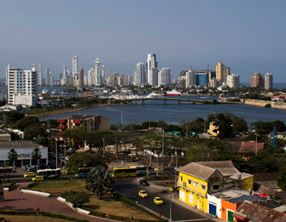
Day 19
Cartagena – Bogotá Airport
Transfer from Cartagena to Bogotá Airport for international connection (one hour).
Prices
Included:
- Local English speaking mountain guide from day 3 to 6 from 2 to 5 people
- Local assistant mountain guide from 4 people
- Local English speaking mountain/cultural guide during the entire program from 6 people
- Local Spanish speaking cultural guide from day 9 to 11 from 2 to 5 people
- Local Spanish speaking trekking guide from day 13 to 16 from 2 to 5 people
- Private transport during the entire program
- Los Nevados National Park entrance fee
- City tour in Bogota with English speaking and entrance fees
- Tayrona National Park tour with English speaking and entrance fees
- City tour in Cartagena with English speaking and entrance fees
- 2 nights in shared double room in Bogotá
- 2 nights in shared double room in Salento
- 1 night in shared double room in Riohacha
- 1 night in shared double room in rustic lodge in Punta Gallinas
- 1 night in shared double room in rustic lodge in Cabo de la Vela
- 2 nights in shared double room at Tayrona’s Lodge
- 1 night in shared double room in Santa Marta
- 2 nights in shared double room in Cartagena
- 3 nights in hammocks or mattresses for the Lost City trek (mattresses according to availability)
- 3 nights in shared tents at campsites in Los Nevados
- Quality mountain tents – 2 people per tent
- Group common campsite equipment
- Mules for group/personal campsite equipment in Los Nevados, food and pax personal gear (Packing and weight allowance – Information will be sent)
- Pack animal during the Lost City trek for groups from 6 PAX
- Meals as specified in the day to day itinerary (18 x breakfast, 11 x lunch and 8 x dinner)
Not Included:
- Domestic and international flights
- Meals not mentioned in the program
- Camping gear
- Alcoholic and soft drinks
- Personal expenses
- Tips
- Everything not mentioned in the “Included” list
No Details Found



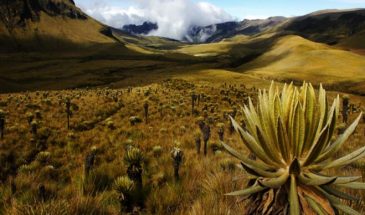

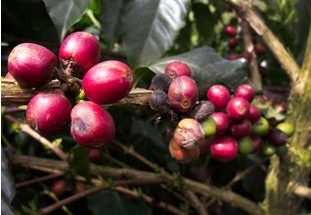
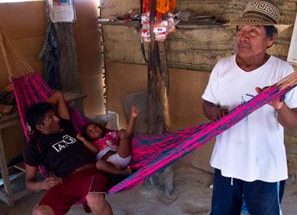
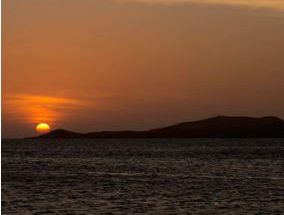
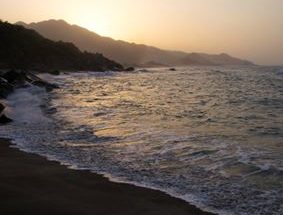
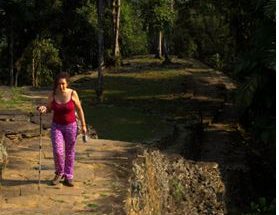
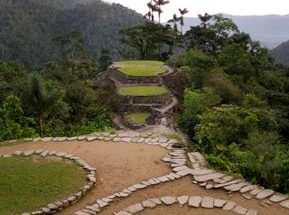


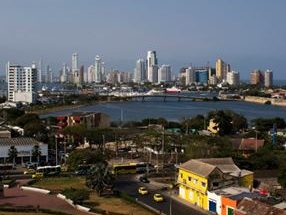

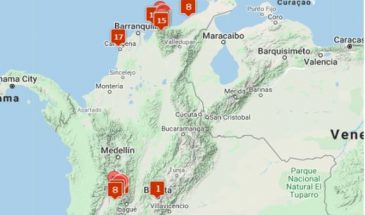



There are no reviews yet.